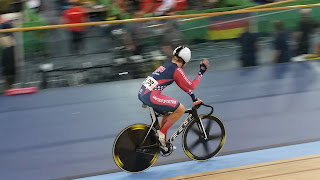I am ashamed to say I have clip-in pedals on my road bike but don’t use them. My Diadora mountain bike -style SPD cleats have served me well ever since I became a spinning instructor in 2009 (birthday gift from my mom). I had a brief stint trying them out on my hybrid bike in Michigan (meaning I clipped by feet in at a stand still, wondered ‘now what?’, and promptly tipped over). I also have tried here in London but lost my concentration at a junction and fell over (at red light fortunately). Finally, on an uphill climb, my derailleur snapped off, which threw me off the bike (probably too much damage to bike from falling over at other times).
 In short, my two attempts at Ride London have been in my trail running shoes, not my cleats. I am aiming to finally hit 100 miles this year on the course, and want to make it as painless as possible. I feel like I am getting lots of time in the saddle, between extra spinning sessions and long rides with my husband. I still have not started strength training yet, which I said I would do (mental note). The next logical step would be to get over my fear of my clips and try them again, right? I reached out to the cycling community and asked for some words of wisdom about learning to ride with clip in shoes.
In short, my two attempts at Ride London have been in my trail running shoes, not my cleats. I am aiming to finally hit 100 miles this year on the course, and want to make it as painless as possible. I feel like I am getting lots of time in the saddle, between extra spinning sessions and long rides with my husband. I still have not started strength training yet, which I said I would do (mental note). The next logical step would be to get over my fear of my clips and try them again, right? I reached out to the cycling community and asked for some words of wisdom about learning to ride with clip in shoes.
Rose from online women’s cycling brand and retailer, Victor and Leap, recommends looking for a shoe that fits. She says ‘the most important thing is to make sure that it’s a good fit that holds your foot and you’re not rolling around. One thing to consider is that generally women have thinner heels – something not all companies take into consideration and so some just don’t hold a foot well enough which has major effects on the efficiency of pedalling, which is one of the main reasons you would use clip-ins in the first place.’ Victor and Leap only sell Fizik shoes because they are one of the few companies that make shoes that fit a women’s foot profile.
When trying on shoes in the shop, Matt, a customer service advisor from Merlin Cycles, says ‘aim to find a shoe that fits snug but not too tight. You want to make sure that when you press down on the ball of your foot, your heel doesn’t slip inside the shoe. Remember, cycling shoes will fit much better on the bike than walking around in as they have extremely stiff soles to transfer your power.’
The benefits of cleats are numerous. Davis and Hull (1981) found that using cleats reduces the fatigue in the quadriceps muscles, which will allow you to ride longer without getting heavy tired legs. In my spinning certification class, they taught us to describe the pedal stroke as a square, where you push down, pull back, pull up, and push forwards. Matt described another good visual to maximise your pedal stroke as to think you are scraping something off the bottom of your shoe to pull around at the bottom of the pedal stroke. The pulling back and up engages the hamstrings and glutes, giving the quads a short rest. This would be a tremendous benefit on a 100 mile bike ride!
Rose points out that being attached to the pedal transfers the power from your leg to the pedal, which is more efficient and requires less effort for a greater outcome. Also the stiffness of a clip-in shoe design also has a purpose as it increases the power transfer. When I use my cleats in spin class, I can feel the ‘up motion’ of my pedal stroke and the moment just feels different too.
Finally, how can I get over the fear of falling off? Personally, I try to always unhook my left foot in the hopes my body will remember to always lean that way. But I also need to remember to do this in my group cycling classes too. I also make the tension release of the clip very loose to increase the speed at which I can release my foot. As I become more accustomed to the clips, I will gradually increase it.
Rose suggests unclipping much earlier than you think is necessary while out on a ride as you can still pedal with one foot for a bit if you need to. There is a small pond near me with a dirt path around it where I might do some practice laps there. Another option is riding around a large empty car park to remind myself of the in-and-out foot motions again. Luckily, my pedals have SPD clips on one side and are regular old pedals on the other, which gives me some flexibility on a day-to-day basis. But Ride London is only a month away now. I need to get going if I am going to wear cleats on the ride.
You can even practice at home. ‘As for practise you don’t have to head straight out on to the road.’ says Sam. ‘One evening put your shoes on sit on your bike, hold on to the sofa and just practise clipping in and out so you get used to the movement without thinking about it.’ He says to then take it outside on a quiet road and keep practising.
What is my next step? Put on my helmet and start practising! Living close to the Velodrome, I can pop over there in the evening and utilise their 1 mile outdoor circuit while clipping in and out on each lap. I need to get my confidence up so I don’t waste my energy on nerves during Ride London.
If you have any tips on getting used to using clipless pedals, please leave a comment below. I also welcome any hilarious stories of falling off your bike while getting accustomed to it.
Davis and Hull. 1981. Measurements of pedal loading in bicycling. II. Analysis and results. Journal of Biomechanics 14(12): 857, 863-861-872.

